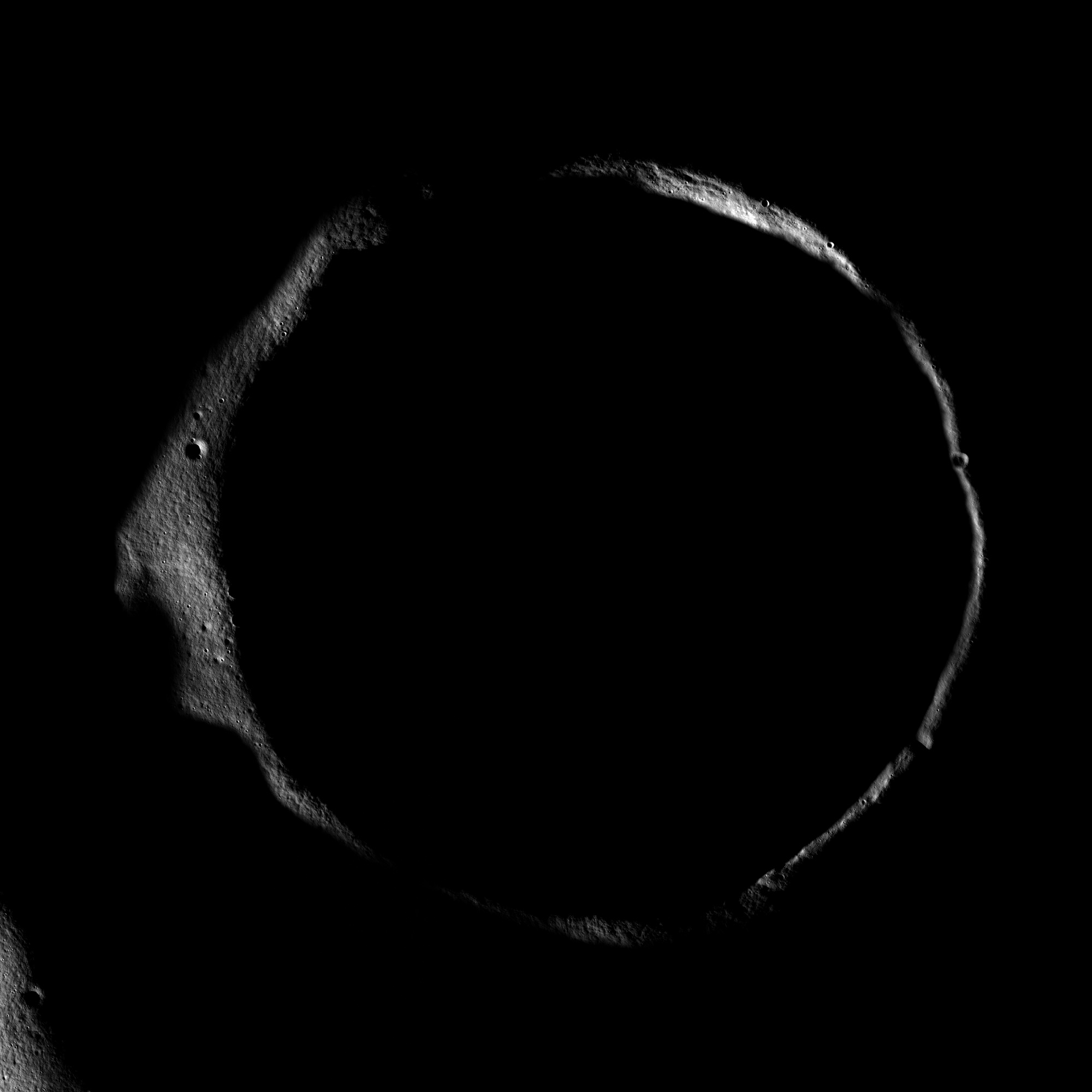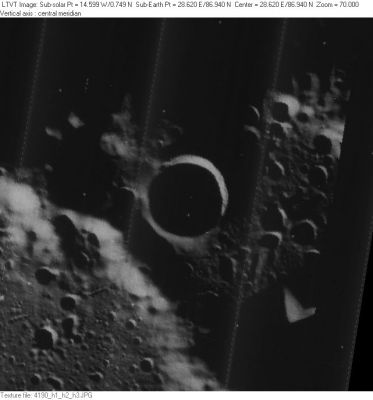
© NASA
Erlanger crater, located at the moon's north pole, looks like a bottomless pit. That's because its floor is perpetually in pitch-black shadow. It's a place where sunlight hasn't fallen over 4 billion years. It would be a great place for aliens to stash a 2001-style monolith.
NASA's Lunar Reconnaissance Orbiter made this eagle-eye photo as it swept over the moon's north pole to look down on the gaping abyss.
At six miles wide, the lunar crater is coincidentally the diameter of Crater Lake near Eugene, Oregon.
Imagine how eerie it would be to climb down into this crater and look up toward a star-saturated sky. The circumpolar constellation Draco the Dragon would wrap around the center of your field of view. The star Polaris and the bright star Vega would, farther out, flank either side of Draco. The Mikly Way would arc high overhead.
A brilliant sliver of light would mark the crater rim. You'd be walking on regolith perpetually frozen to -370 degrees Fahrenheit.
If you were standing on the crater rim the sun and Earth would hug the horizon. Over approximately one month the sun would complete a full circuit around the horizon, but the Earth would hang motionless as the moon lazily rotated in gravitational tide-lock. That sight alone would be worth the cost of a lunar express ticket aboard NASA's planned Altair lander.
It is suspected that water ice from comets that impacted the moon may be trapped in permanently shadowed craters at the moon's poles. Unlike Earth, the moon is only inclined 1.5 degrees on it axis. So the sun never rises above the walls of the northernmost craters.

© NASA
Lunar ice can be distinguished from other materials by the way it reflects radar. In 1994 NASA's Clementine orbiter bounced radar signals off the moon and found hints of the water-ice signature.
NASA's Lunar Prospector's neutron spectrometer sensed hydrogen from water ice down to a depth of a couple of feet. Water is therefore accessible by robotic mining equipment of the far future.
On August 20th,LRO and the Indian Space Research Organization's (ISRO) Chandrayaan-1 orbiter were maneuvered to within a few dozen miles of each other. Once in formation, Chandrayaan-1 fired its radar beam at Erlanger's crater floor. Both spacecraft listened for the radar echoes. As of today scientists were still analyzing the data to make sure the experiment worked, and they anticipate success.
On October 9, NASA's Lunar Crater Observation and Sensing Satellite (LCROSS) and its rocket booster will smash into a crater at the moon's south pole to attempt to excavate water ice into a plume that will be observed by telescopes all over the Earth, and LRO.
NASA says LCROSS is still on track for a head-on collision despite the fact it lost more than half its propellant late last week. A electronics glitch caused the spacecraft to repeatedly fire its thrusters to try to orient itself.
Ice would support a manned moon base by providing not only drinking water but also hydrogen for fuel and oxygen for breathable air. It's estimated there are 300 million tons of ice at the poles. That's one giant ice rink for mankind.


Reader Comments
to our Newsletter